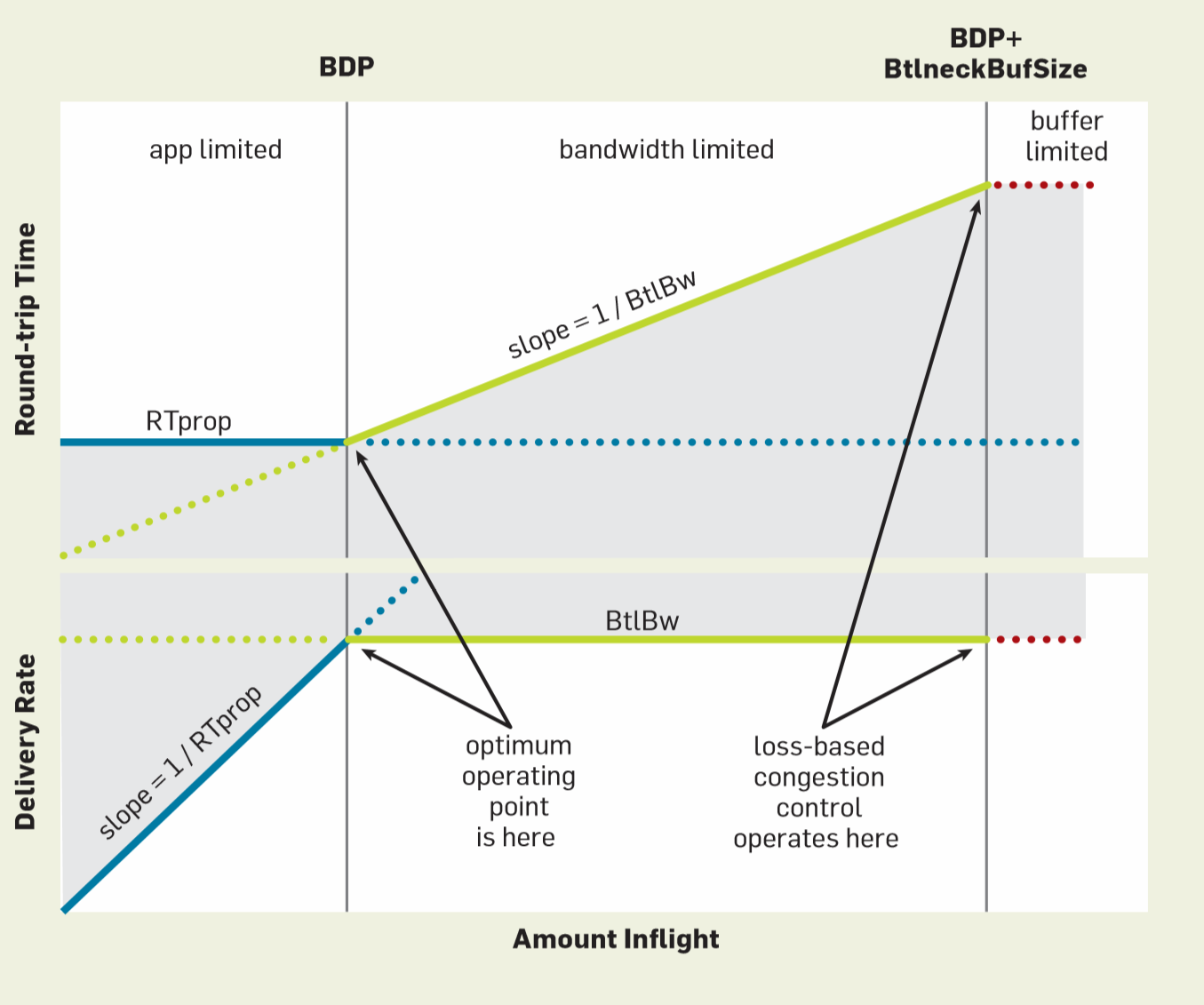Congestion Control
TCP Congestion Control is responsible for regulating the rate and amount of packets that your computer sends. This is important for regulating the total amount of data in flight in a network - if every host sends as much data as possible, the routers in the middle will not be able to handle the traffic and thus drop packets.
Traditionally, TCP has used Loss based congestion control, such as TCP Cubic. Generally, these schemes keep sending more data until they see loss in the network. This means that they have hit the maximum throughput of the network, and thus they back off slightly. While this is generally effective at maximizing throughput, this puts unnecessary strain on networks because there are more packets in flight than needed to fully utilize the network.
Routers have queues or buffers to handle excess packets - when a router receives packets at a rate greater than it can retransmit, it will queue these packets into this buffer. When this buffer is filled, the router will simply drop this packet. Because loss based schemes wait until this dropping point to slow down their sending rate, they will always increase until the queue is completely full. If the queues are large, this can greatly increase the round trip time of packets, and reduce the networks’ resilience to traffic bursts.
Delay Based Congestion Control
Delay based control aims to fix this problem by attempting to send at the maximum rate possible without filling the intermediate buffers. As the number of packets sent by an application increases, its throughput will increase up until the bottleneck routers operating point. Then, these packets will just be queued into the router’s buffer or dropped. As the router queue becomes filled, the round trip time for each packet will be increased as they must now wait in this filled queue. This relationship is depicted below.
 BBR: Congestion-Based Congestion Control. Neal Cardwell et. al
BBR: Congestion-Based Congestion Control. Neal Cardwell et. al
BBR
BBR (bottleneck bandwidth and round-trip propagation time) is not strictly a loss based or delay based congestion, but rather a congestion based protocol that attempts to infer the optimal sending rate for an application by estimating two parameters: the perceived bandwidth and the round trip time. Using these parameters, BBR should also operate at the optimal sending rate shown above.
In a perfect world, the optimal operating point is at the BDP (bandwidth delay product) which calculates the maximum packets that can be transmitted through a network without excess delay. But, operating at this point reliably in practice is still an active area of research.
Background Work
Measuring bottleneck bandwidth and round-trip propagation time
Mario Hock, Roland Bless, Martina Zitterbart
Karlsruhe Institute of Technology
Karlsruhe, Germany
Validates BBR with a series of tests. Discusses the following limitations:
Estimate of bandwidth is available share.
Esimate of bandwidth is always too high.
Luke Hsia and Jervis Muindi
Mo Dong et. al. 15
A congestion control protocol using a ‘black-box’ approach to networks. The algorithm relies on utility functions and mini experiments to adjust sending rate.
Venkat Arun et. al. NSDI 2018
Uses a black-box approach to congestion control similar to PCC. This improves on PCC’s experiment idea and includes delay in its utility function.
